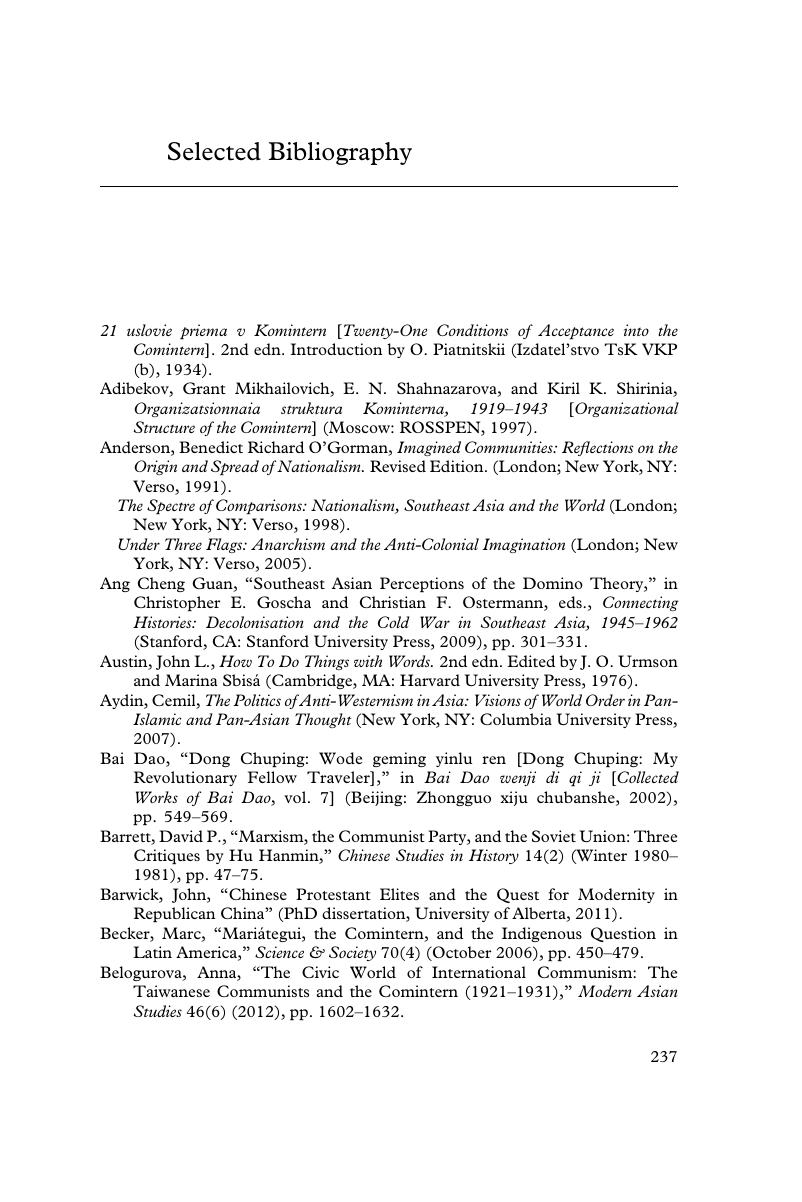Book contents
- The Nanyang Revolution
- The Nanyang Revolution
- Copyright page
- Contents
- Figures and Tables
- Acknowledgments
- Note on Transliteration
- Terms and Abbreviations
- Part I Revolution in the Nanyang
- Part II The Comintern, the MCP, and Chinese Networks, 1930–1935
- Part III The GMD, the MCP, and the Nation: Minzu Cultivated, Minzu Lost
- Selected Bibliography
- Index
- References
Selected Bibliography
Published online by Cambridge University Press: 23 August 2019
- The Nanyang Revolution
- The Nanyang Revolution
- Copyright page
- Contents
- Figures and Tables
- Acknowledgments
- Note on Transliteration
- Terms and Abbreviations
- Part I Revolution in the Nanyang
- Part II The Comintern, the MCP, and Chinese Networks, 1930–1935
- Part III The GMD, the MCP, and the Nation: Minzu Cultivated, Minzu Lost
- Selected Bibliography
- Index
- References
Summary

- Type
- Chapter
- Information
- The Nanyang RevolutionThe Comintern and Chinese Networks in Southeast Asia, 1890–1957, pp. 237 - 256Publisher: Cambridge University PressPrint publication year: 2019

